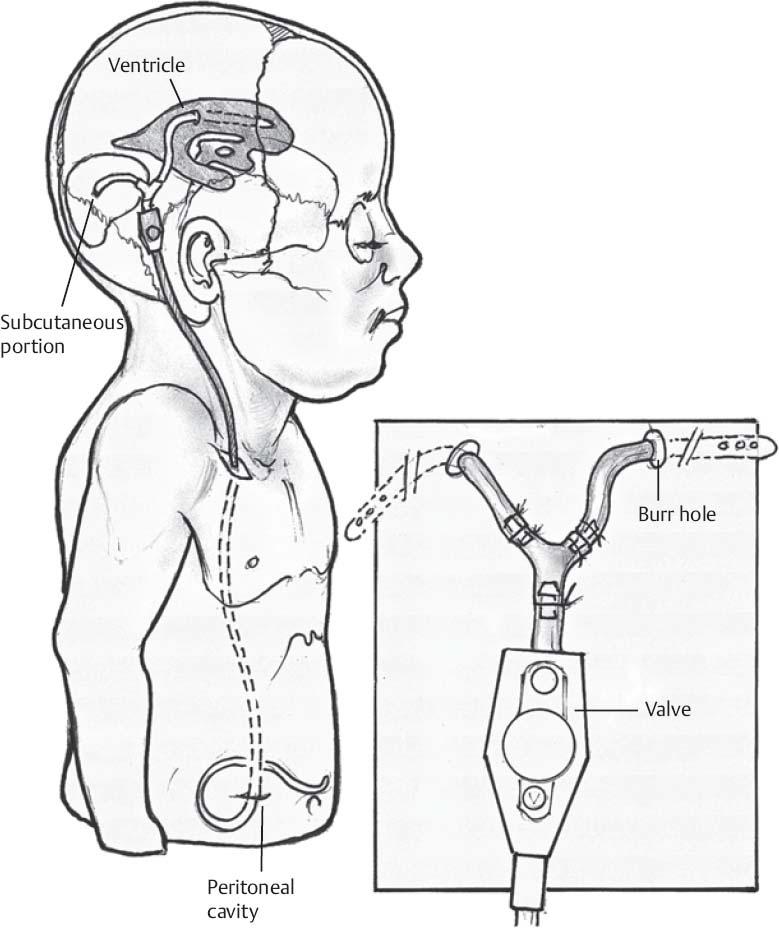♦ Preoperative
Operative Planning
- Review imaging (computed tomography, magnetic resonance imaging, or ultrasound in neonate)
- Ventricular catheter placement:
- Right frontal placement preferred (see Chapter 83, External Ventricular Drain [Ventriculostomy])
- Target largest ventricle if ventricular asymmetry exists
- Right frontal placement preferred (see Chapter 83, External Ventricular Drain [Ventriculostomy])
Equipment
- Basic shunt tray
- Ventricular access device (Ommaya, Leroy, etc.)
Operating Room Set-up
- Headlight
- Loupes (optional)
- Bipolar cautery
Anesthetic Issues
- Room should be warm to ensure normothermia in neonates
- Intravenous antibiotics with skin flora coverage (cefazolin 2 g for adults, 30 mg/kg for pediatrics) should be given 30 minutes prior to incision
♦ Intraoperative
Positioning
- Patient supine with head in midposition
Planning of Minimal Shave
- Use electric razor
Opening of Surgical Packs
- Should be done after room set-up and positioning of patient
Planning of Sterile Scrub and Prep
Mark Incision
- Precoronal parasagittal incision
- Midpupillary line in children
- Three centimeters from midline in adults
- Midpupillary line in children
Linear Scalp Incision
- Bipolar cautery for hemostasis
- Small, self retaining retractor
Burr Hole
- One centimeter in front of coronal suture in midpupillary line in children; 12 to 13 cm up from nasion and 3 cm lateral of midline in adults
- Made with hand perforator drill, or scalpel in neonates and pneumatic drill in adults
Subgaleal Pocket (Fig. 84.1)
- Clamp or blunt digital dissection used to create pocket
- Reservoir placed in pocket
- Reservoir sutured to galea or fastened with screw to skull as needed
Catheter Placement
- See Chapter 83
- Consider stereotactic placement, especially for patients with small or shifted ventricles
Connection
- Once in ventricle, catheter connected to reservoir with 2–0 silk tie
- Prior to closure, aspirate from reservoir using a 23-gauge needle or smaller to confirm correct catheter placement in ventricle or cyst
< div class='tao-gold-member'>
Only gold members can continue reading. Log In or Register to continue
Stay updated, free articles. Join our Telegram channel

Full access? Get Clinical Tree






